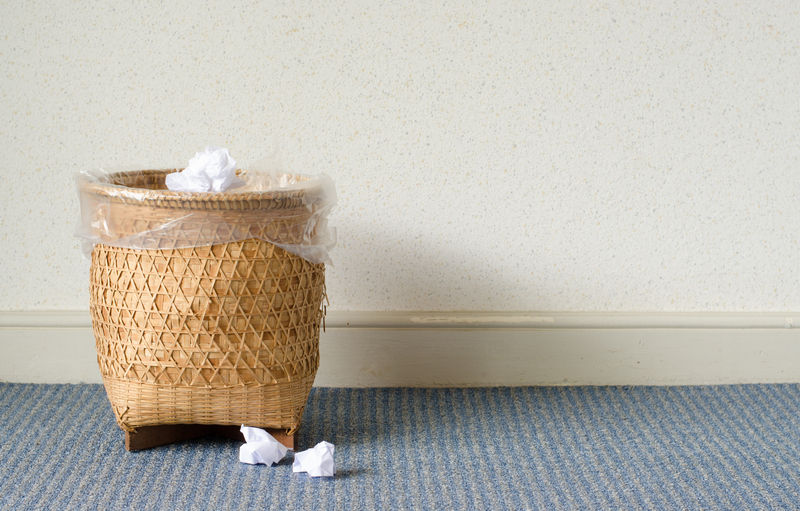Smart Eco-Friendly Upgrades for Your Home Environment
In today's rapidly changing world, adopting an eco-friendly lifestyle is more important than ever. Improving the energy efficiency of your home not only contributes to a healthier planet but also saves you money in the long run. This comprehensive guide provides various smart eco-friendly upgrades that you can implement to make your home environment more sustainable and efficient.
The Importance of Eco-Friendly Upgrades
Living sustainably is more than just a trend; it's a responsibility. With climate change posing a significant threat, it's essential to reduce our carbon footprint. By making smart upgrades to your home environment, you not only reduce energy consumption but also contribute to a healthier planet for future generations.
Understanding Your Home's Energy Use
Before diving into specific upgrades, it's vital to understand how much energy your home consumes. You can conduct an energy audit to assess your energy use and identify the key areas that need improvement. These audits will often highlight inefficient appliances or areas of the home where energy is lost, especially in heating and cooling systems.

Smart Eco-Friendly Upgrades You Can Make
1. Install Energy-Efficient Windows
Replacing old, single-pane windows with new energy-efficient models can significantly cut down on heating and cooling costs. Consider investing in double or triple-glazed windows which provide excellent insulation and reduce heat loss.
- Improved Insulation: Enhances comfort by reducing outside noise and improves temperature control.
- Reduced Bills: Lower your monthly energy bills through efficient heating and cooling.
2. Upgrade to Smart Thermostats
Smart thermostats are an excellent upgrade that optimize energy use by learning your schedule and adjusting temperatures accordingly. They provide the ability to control your home's climate remotely using your smartphone.
- Energy Savings: Can reduce heating and cooling costs up to 15% annually.
- _Remote Access:_ Control from anywhere, ensuring energy savings even when you're not home.
3. Opt for LED Lighting
Switching from traditional incandescent bulbs to LED lighting is one of the simplest ways to decrease energy consumption. LED bulbs use up to 75% less energy and last 25 times longer than incandescent lighting.
- Cost-Effective: Though initially more expensive, they reduce energy and replacement costs over time.
- Environmentally Friendly: Lower energy consumption leads to a decrease in fossil fuel use and a reduction in greenhouse gas emissions.
4. Solar Panel Installation
Solar panels are a significant investment that can lead to long-term energy savings. By harnessing renewable energy from the sun, you decrease reliance on non-renewable resources. While initially costly, government incentives and tax rebates can help offset the installation fees.
- Renewable Energy Source: Provides clean, green energy.
- Increased Property Value: Homes with solar panels can have higher property values.
Water Conservation Tips
Low-Flow Showerheads and Faucets
Installing low-flow fixtures in bathrooms and kitchens can significantly reduce water usage. These fixtures aerate the water, reducing flow without compromising performance.
- Save Water: Cut water use by almost 50%.
- Lower Utility Bills: Decreases costs for water as well as the energy required to heat it.
Smart Irrigation Systems
Invest in a smart irrigation system for a more efficient approach to watering your garden. These systems monitor weather and soil conditions, optimizing water use according to current needs.
- Water Savings: Use up to 30% less water than conventional irrigation systems.
- Improved Plant Health: Provides precise watering, promoting healthier plant growth.

Green Technologies for a Sustainable Home
Geothermal Heating and Cooling
Utilize the stable temperature of the earth as a heat source in winter and a heat sink in summer. Geothermal systems are highly efficient as they transfer heat instead of generating it from fossil fuels.
- Eco-Friendly: Reduces greenhouse gas emissions.
- Long-Term Savings: Though installation requires upfront investment, operational costs are significantly reduced.
Home Automation
Implementing a home automation system can allow for optimal energy management. These systems work with various components of your home to ensure they are being used efficiently.
- _Convenience:_ Control lighting, heating, and cooling from anywhere, ensuring they operate only when needed.
- Energy Efficiency: Automated systems can reduce standby energy consumption.
Conclusion: Start Your Eco-Friendly Journey Today
Adopting smart eco-friendly upgrades in your home not only helps the environment but also enhances your quality of life. By investing in renewable technologies, energy-efficient appliances, and water-saving devices, you contribute to a sustainable future. As an added benefit, many of these changes lead to financial savings through reduced utility bills. Embrace the change and make your home environment a model of sustainability.
Begin your journey to a more eco-friendly home today, and enjoy the peace of mind that comes with knowing you're making a positive impact on the world. For more tips and expert advice, keep exploring and learning about sustainability and smart living.